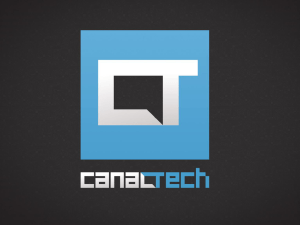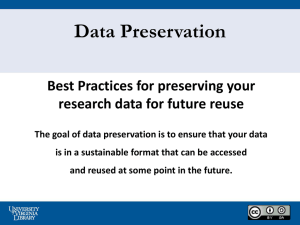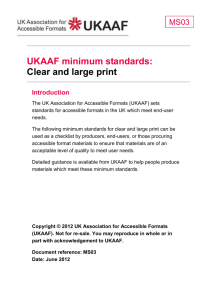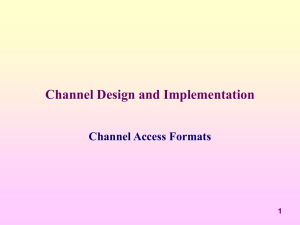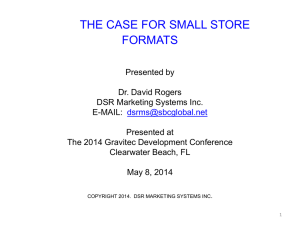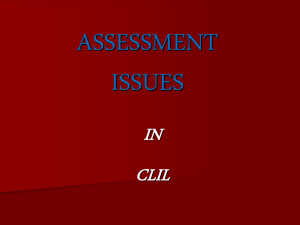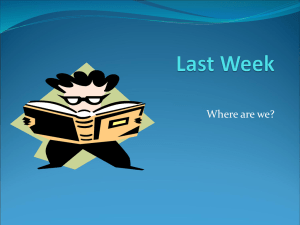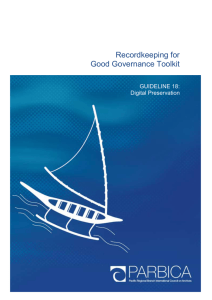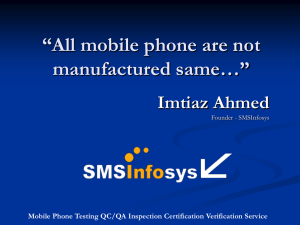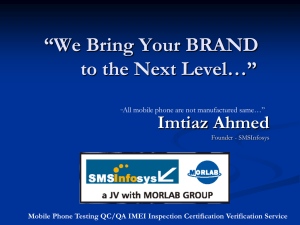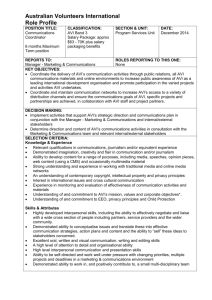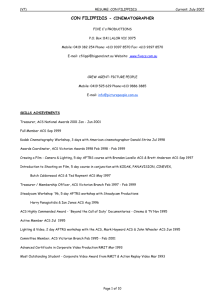The Challenges and Rewards of Open Source Video Digitization
advertisement
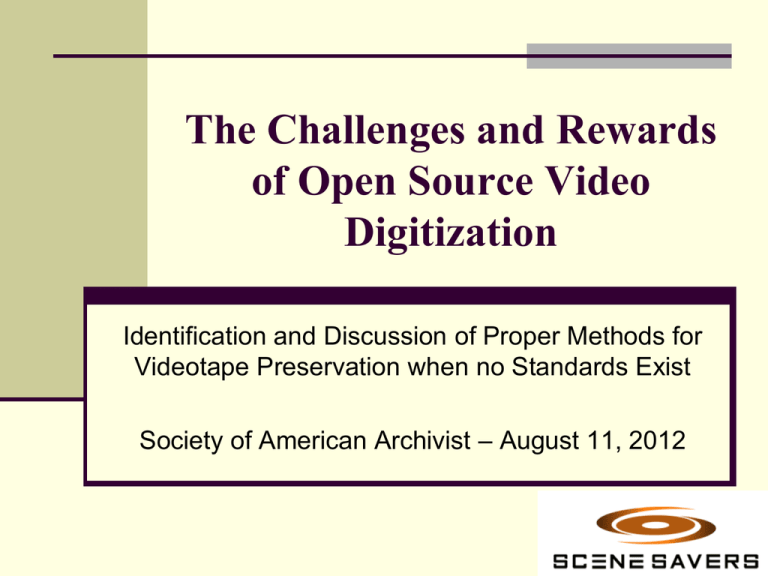
The Challenges and Rewards of Open Source Video Digitization Identification and Discussion of Proper Methods for Videotape Preservation when no Standards Exist Society of American Archivist – August 11, 2012 Introduction Topics Covered Challenges faced by archives Pros / Cons of Open-Source compared to “solutions for sale” Formats to consider for preservation and access Discussion of use of formats in real-world applications. What Will You Have in Your Archive Extinct formats (equipment no longer manufactured, hasn’t been made in decades) 2” Quad, ½” EIAJ, ½” CV… Endangered formats (equipment no longer manufactured, but can still be found…no longer in common use) 1” Type C, ¾” U-Matic, Betamax, D-1, D-2, MII (M2), Laser disks, Motion picture film Outdated formats (equipment no longer manufactured, but still supported/commonly used) Betacam, Betacam SP, VHS, S-VHS, Hi-8mm Current formats (equipment still manufactured) Digital Betacam, DV tapes (DV-Cam, DVC-Pro, Mini DV), HD formats Challenges faced by archives Problems related to your physical assets Obsolescence of equipment Degradation Other problems Can’t “Wait and See”…or risk loss of assets Problems with what to create No set standards exist for film or video Preservation is contrary to access Cost for digitizing Cost for storage Decision criteria What are my goals Preservation Access/editing Does the chosen format capture all the potential quality of the original (audio and video) Is it future-proof (at least as much as it can be) Comparison of different options Lossless Uncompressed (QuickTime, AVI) 8-bit, 72 GB per hour 10-bit, 100+ GB per hour Compressed (FFV1, JPEG 2000, other) 8-bit, 25-30 GB per hour 10-bit, 45-50 GB per hour Comparison of different options Lossy MPEG 2 (could range from DVD quality to 50 Mbps high quality) DV (DV25) Not easily editable 3.6 GB per hour to 25 GB per hour Easily editable 12 GB per hour MPEG 4 Easily editable Range from very low to very high quality (originally designed for “smart” devices” 300 MB to ???GB per hour Open Source vs. Purchased Open Source – Benefits Widely available Usually free or low cost Developers tend to be passionate…develop for what market needs Should be less prone to market changes Tends to be more flexible with respect to users needs Open Source – Disadvantages Often requires technical background, programmers Choices can be overwhelming Support can be difficult to obtain…can get wrong advice Open Source vs. Purchased Purchased – Benefits Financial incentive to deliver what mass audience wants May be easier to use (GUI) Generally, good technical support available Purchased – Disadvantages Subject to Manufacturer’s whims (for example, Final Cut X) What is good for masses may not be what you need Usually not as flexible/customizable Real World examples Uncompressed QT Files very large, difficult to play back on all but fastest computers 8-bit or 10-bit option…but 10-bit requires special software to play back Widely supported / widely used QT container offers additional capabilities Uncompressed AVI Files very large…not as difficult to play back as QT. 8-bit or 10-bit option Widely supported / widely used AVI more limited in what “container” can do Real World Examples… cont FFV1 Open-source, standardized Reasonable file size Supported on all operating systems (MAC, WIN, Linux) with various players Can be played in software Users (City of Vancouver, NCSU, MediaTek) Gaining acceptance Real World Examples…cont JPEG 2000 Available for about 12 years Benefits mostly same as FFV1, but can’t be played in software Few encoder manufacturers support…but gaining Users (Library of Congress, Digital Cinema (lossy), various archives) Conclusion Summary Contact: Scene Savers 424 Scott Blvd Covington, KY 410100 859-291-5100 800-978-3445 jwalko@scenesavers.com

